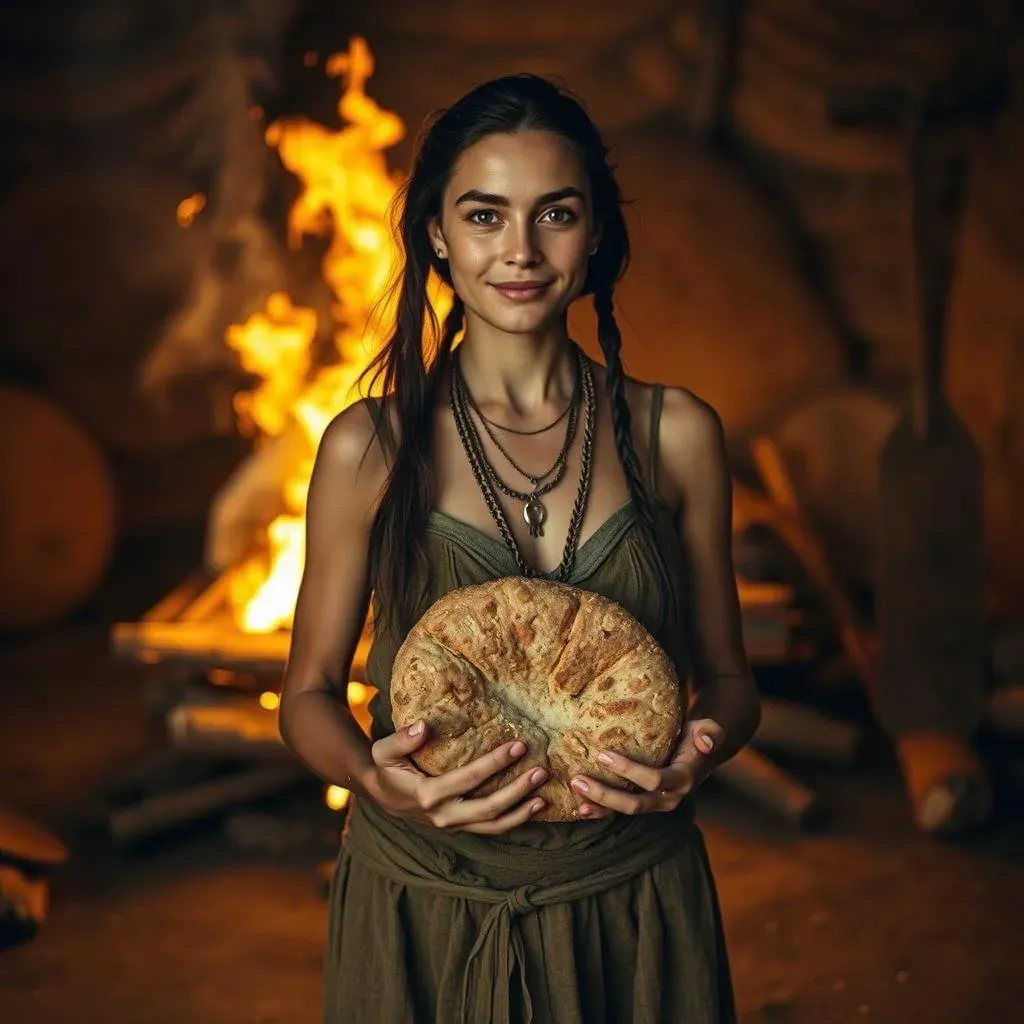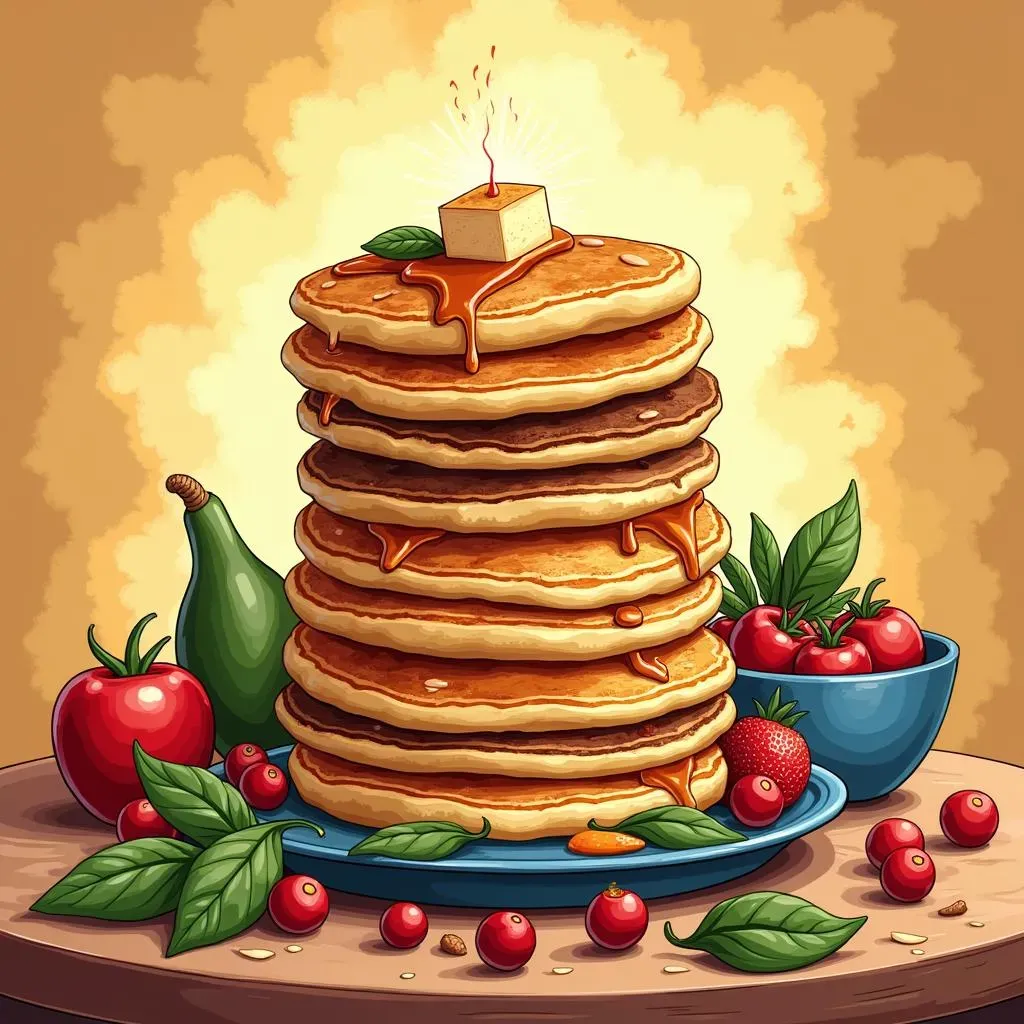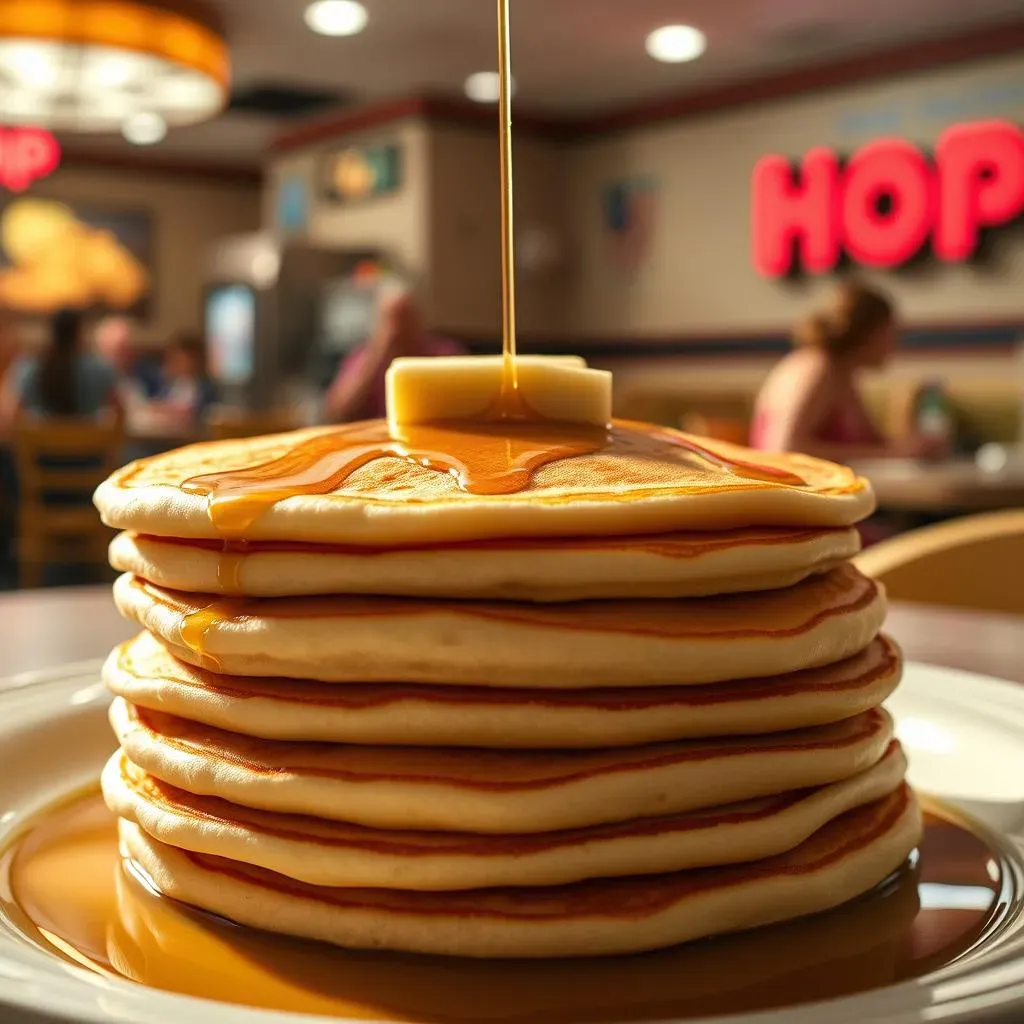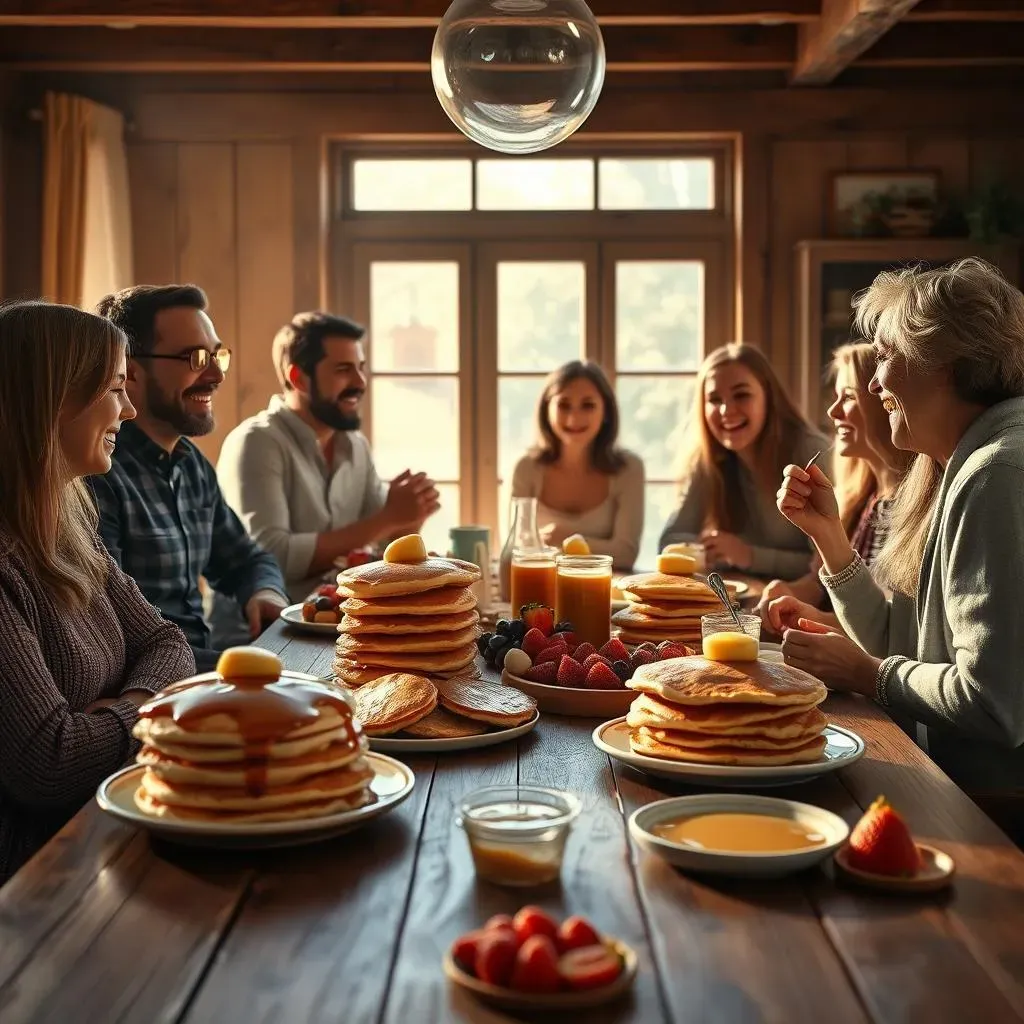Table of Contents
Ever wondered when was pancake invented? It's a question that takes us on a delicious journey through time, way beyond your typical Sunday brunch. We're not just talking about the fluffy stacks you might whip up at home, but a culinary tradition that stretches back thousands of years. Forget the modern pancake mixes for a moment; we're going way back, past your grandma's secret recipe, to ancient civilizations where these simple, flat cakes first began to sizzle. This article will explore the surprisingly ancient roots of the pancake, tracing its evolution from prehistoric griddles to the global phenomenon it is today. We’ll explore regional variations, from the thin crepes of France to the spongy injera of Ethiopia. We'll also look at how the humble pancake has become a cultural icon, celebrated in festivals and fueling our breakfast cravings worldwide. So, grab your syrup, and let's flip through the fascinating history of the pancake.
Ancient Origins: When Was Pancake Invented?

Ancient Origins: When Was Pancake Invented?
Prehistoric Pancakes: A Stone Age Staple
Okay, so, when we talk about "when was pancake invented," we're not talking about some modern kitchen gadget. We're talking way back, like, Stone Age back. Seriously, imagine our ancestors, not with fancy non-stick pans, but with hot stones or clay griddles. They were mixing ground grains with water, maybe some crushed nuts or berries, and cooking up something that, while not exactly IHOP-worthy, was definitely a pancake. Archeologists have found evidence suggesting that these early pancakes were a food source for prehistoric societies, maybe even as far back as 30,000 years ago. They weren’t exactly fluffy, but they were fuel!
These ancient versions probably weren’t the fluffy, buttery delights we know today. They were more like flatbreads, made from whatever grains were available at the time, and cooked over an open fire. Think of it as the caveman’s version of a quick and easy meal. It just goes to show that the basic idea of a flat, cooked batter is something that has been around for a seriously long time. It's not just a modern breakfast food; it's a food that has been nourishing people for millennia.
Ancient Greeks and Romans: The First Written Recipes
Fast forward a few millennia, and we find the first written records of pancakes, not from some cave drawing, but from the ancient Greeks and Romans! Around 500 B.C.E., the Athenian poet Cratinus mentioned warm pancakes in one of his writings. Can you imagine poets writing about pancakes? It's pretty cool. The Romans had their own version too, called "Alita Dolcia," which translates to "another sweet thing." They were made with milk, flour, eggs, and spices, and they were usually served with honey. So even back then, they knew that the best pancakes were the ones with a bit of sweetness.
These pancakes were a bit more refined than their prehistoric cousins. They were made with better ingredients, and they were cooked with more precision. It seems like even in ancient times, people were experimenting with different ways to make their pancakes even better. They were probably the first foodies, and pancakes were their canvas. It's amazing to think that the same basic concept of a flat cake has been enjoyed by so many different cultures, each adding their own twist to the recipe.
Civilization | Approximate Time Period | Pancake Type | Ingredients |
|---|---|---|---|
Prehistoric Societies | 30,000 years ago | Basic Flat Cakes | Ground grains, water, nuts, berries |
Ancient Greeks | 500 B.C.E. | Warm Pancakes | Not specified |
Ancient Romans | 1st Century C.E. | Alita Dolcia | Milk, flour, eggs, spices, honey |
Pancakes: A Global Phenomenon in the Making
So, from basic sustenance for prehistoric people to a sweet treat for the ancient Greeks and Romans, the pancake's journey had only just begun. These early versions of pancakes laid the groundwork for the incredibly diverse array of pancakes we see today. It's not just a Western thing, either. Throughout history, different cultures have developed their own unique versions, using local ingredients and cooking methods. Think about it; from the thin crepes of France to the spongy injera of Ethiopia, it's all connected to that same basic principle: a flat, cooked batter. The question of “when was pancake invented?” really opens a door to a global culinary adventure.
The fact that this simple food has such a long and varied history is pretty remarkable. It shows how something as basic as a flat cake can adapt and evolve over time, becoming a staple in so many different cultures. It also proves that good food is timeless. These ancient pancakes aren't just a fun fact of history; they're the foundation of what we enjoy today. It's amazing to think that the same basic concept of a flat cake has been enjoyed by so many different cultures, each adding their own twist to the recipe.
Pancakes Around the World: Regional Twists

Pancakes Around the World: Regional Twists
Now, let's get to the really fun part: how different cultures have taken the basic pancake concept and run wild with it. It's like everyone got the same instruction manual but decided to build completely different, equally awesome, pancake empires. Forget the idea that pancakes are just a breakfast thing; in many places, they are a staple for any meal, any time of day. Think of it this way: a pancake is like a blank canvas, and every culture has its own unique set of flavors, textures, and traditions to paint on it. From the paper-thin crepes of France to the hearty blini of Russia, the world of pancakes is a delicious melting pot. It's not just about food; it's about culture, history, and a shared love for a good flat cake.
Let’s take a tasty trip around the globe, shall we? In France, you’ve got crêpes – thin, delicate, and perfect for sweet or savory fillings. They're practically an art form, flipped with a special spatula and often enjoyed with a glass of cider. Then there are Dutch *pannenkoeken*, which are larger and thinner than American pancakes, often cooked in a big pan and sometimes filled with bacon or apples. In Ethiopia, they have *injera*, a sourdough flatbread that’s spongy and slightly tangy, made from teff flour, and it's used as a base for all sorts of flavorful stews. It’s mind-blowing how a simple idea can morph into so many different delights. Each pancake is a reflection of its environment, a taste of the culture that created it. It's like each is telling a story, a culinary novel, if you will.
Country | Pancake Type | Key Features |
|---|---|---|
France | Crêpes | Thin, delicate, versatile fillings |
Netherlands | Pannenkoeken | Large, thin, often with bacon or apples |
Ethiopia | Injera | Sourdough, spongy, used as a base for stews |
And the pancake adventure doesn't stop there. In India, you’ll find *dosas*, thin, crispy pancakes made from fermented rice and lentil batter, often served with sambar and chutney. They're like the savory cousins of our sweet stacks. Over in Russia, blini are small, thick pancakes, made with yeast and often topped with sour cream, caviar, or jam. They're more like tiny, fluffy clouds of goodness. Each culture has its own unique way of enjoying this simple dish, and it’s this diversity that makes the world of pancakes so fascinating. It’s not just a meal; it’s a cultural experience, a way to connect with different traditions and flavors. It’s like a global pancake party, and everyone's invited.
It's truly amazing to see how a simple batter can transform into such a wide variety of dishes. It's not just about the ingredients, but also the cooking methods and the way each culture has adapted the pancake to their own tastes and preferences. The different types of pancakes around the world are a testament to human creativity and the universal love of good food. It's a reminder that while we may have our differences, there are some things that unite us all, and the enjoyment of a good pancake is definitely one of them. It also proves that the question "when was pancake invented" is just the beginning of a much bigger story.
- India: Dosas - Thin, crispy, made from fermented rice and lentil batter.
- Russia: Blini - Small, thick, yeast-based pancakes.
- Japan: Okonomiyaki - Savory pancakes with cabbage and other ingredients.
Pancakes in Modern Times: From IHOP to Pancake Day

Pancakes in Modern Times: From IHOP to Pancake Day
Okay, so we've seen how pancakes have been around for ages, evolving from simple flatbreads to global delicacies. But what about the pancakes of today? How did they go from ancient griddles to the stacks we see on our plates? Well, that's where places like IHOP come in. The International House of Pancakes, or IHOP, is like the Disneyland of pancakes, a place where you can get pretty much any type of pancake you can imagine, any time of day. It's become a cultural icon, a place where families gather for weekend breakfasts, and where late-night cravings are satisfied. IHOP has really cemented the pancake as a modern staple, showcasing its versatility and mass appeal. It's a testament to how a simple dish can become a global sensation with a little bit of imagination (and a lot of butter).
But modern pancake culture isn't just about restaurant chains. It's also about traditions like Pancake Day, or Shrove Tuesday. This is the day before Lent starts, and it's a time when people traditionally used up all the rich foods in their pantry before the fasting period. So, what better way to use up all that butter, eggs, and milk than by making a huge stack of pancakes? In the UK and other Commonwealth countries, Pancake Day is a big deal, with pancake races, flipping competitions, and of course, a lot of pancake eating. It's a fun, festive way to celebrate this simple dish, and it shows that pancakes aren't just about food; they're about community and tradition, too. It's a way to connect with history while enjoying a delicious meal. It's a reminder that "when was pancake invented" is a story that's still being written today.
Modern Pancake Element | Description | Cultural Significance |
|---|---|---|
IHOP | International chain specializing in pancakes | Represents mass appeal and modern pancake culture |
Shrove Tuesday/Pancake Day | Celebration before Lent involving pancake consumption | Connects pancakes to tradition and community |
More Than Just Breakfast: The Cultural Impact of Pancakes

More Than Just Breakfast: The Cultural Impact of Pancakes
Okay, so we've journeyed through time and across the globe, looking at pancakes. But let's be real, they're so much more than just a breakfast food, right? They've become cultural symbols, showing up in all sorts of celebrations and traditions. Think about it, pancakes aren't just something you eat; they're something you experience. They’re a way to connect with family, friends, and even different cultures. From pancake races to religious festivals, these simple flat cakes have a knack for bringing people together. It's like they've got this magical power to create a sense of community and happiness. And that’s why it’s so important to understand, that the question of “when was pancake invented” is actually just the beginning of a much bigger story about how food shapes our lives.
Pancakes have this uncanny ability to morph into whatever a culture needs them to be. They’re the perfect canvas for any type of ingredient. They can be sweet, savory, or even spicy, adapting to the taste and traditions of the people who make them. In some cultures, pancakes are a symbol of hospitality, a way to welcome guests and show them you care. In others, they are part of religious rituals, carrying a deeper spiritual meaning. It's amazing how one simple food can take on so many different roles and meanings. They are a reminder that food isn't just fuel; it's a powerful tool for connection, celebration, and cultural expression. It’s like a universal language spoken in batter and syrup. It’s not just about the food; it’s about the stories it tells and the memories it creates.
Cultural Role | Description | Examples |
|---|---|---|
Hospitality | Used to welcome guests and show care | Serving pancakes to visitors in various cultures. |
Religious Rituals | Part of spiritual practices | Pancakes eaten during Shrove Tuesday/Pancake Day. |
Community Bonding | Used to bring people together | Pancake races and festivals. |
And we can't forget about the pure joy pancakes bring, especially to kids. I remember when I was young, my grandma used to make these huge stacks of pancakes on Sunday mornings. They weren’t just breakfast, they were an event. The smell of them cooking filled the entire house, and everyone would gather around the table, eager to dig in. Those memories are so special, and they're a testament to the power of food to create happy moments. Pancakes aren’t just a meal; they’re an experience, something that brings people together and creates lasting memories. They are a way to show love, care, and to make everyday moments a little bit more special. It’s like a simple recipe for happiness, and it's proof that the impact of a good pancake goes way beyond the plate.
So, the next time you're flipping a pancake, think about its journey. From prehistoric griddles to modern-day kitchens, this simple dish has been around for thousands of years, nourishing people and connecting cultures. The question of “when was pancake invented” is important, but it's also important to understand that the story of the pancake is still being written. Each time someone makes a pancake, they are adding their own chapter to this delicious history, creating new memories and traditions. It's a reminder that food is more than just sustenance; it's a part of our lives, our culture, and our shared human experience. It’s a story that will continue to be told, one delicious pancake at a time.
- Symbol of Love: Pancakes are often made to show care and affection.
- Memory Makers: They create lasting memories, especially for children.
- Universal Appeal: Pancakes are enjoyed across cultures and age groups.
The Enduring Legacy of the Pancake
From its ancient origins to its modern-day incarnations, the pancake has proven to be more than just a breakfast staple. Its simple yet versatile nature has allowed it to adapt and thrive across cultures and centuries. Whether you're enjoying a stack at a diner, savoring a delicate crêpe in Paris, or participating in a Pancake Day race, you're partaking in a culinary tradition that has spanned millennia. The story of "when was pancake invented" isn't just about a single moment in time; it’s a continuing narrative of human ingenuity, culinary creativity, and our shared love for a simple, satisfying treat. So, the next time you flip a pancake, take a moment to appreciate its long and delicious history.